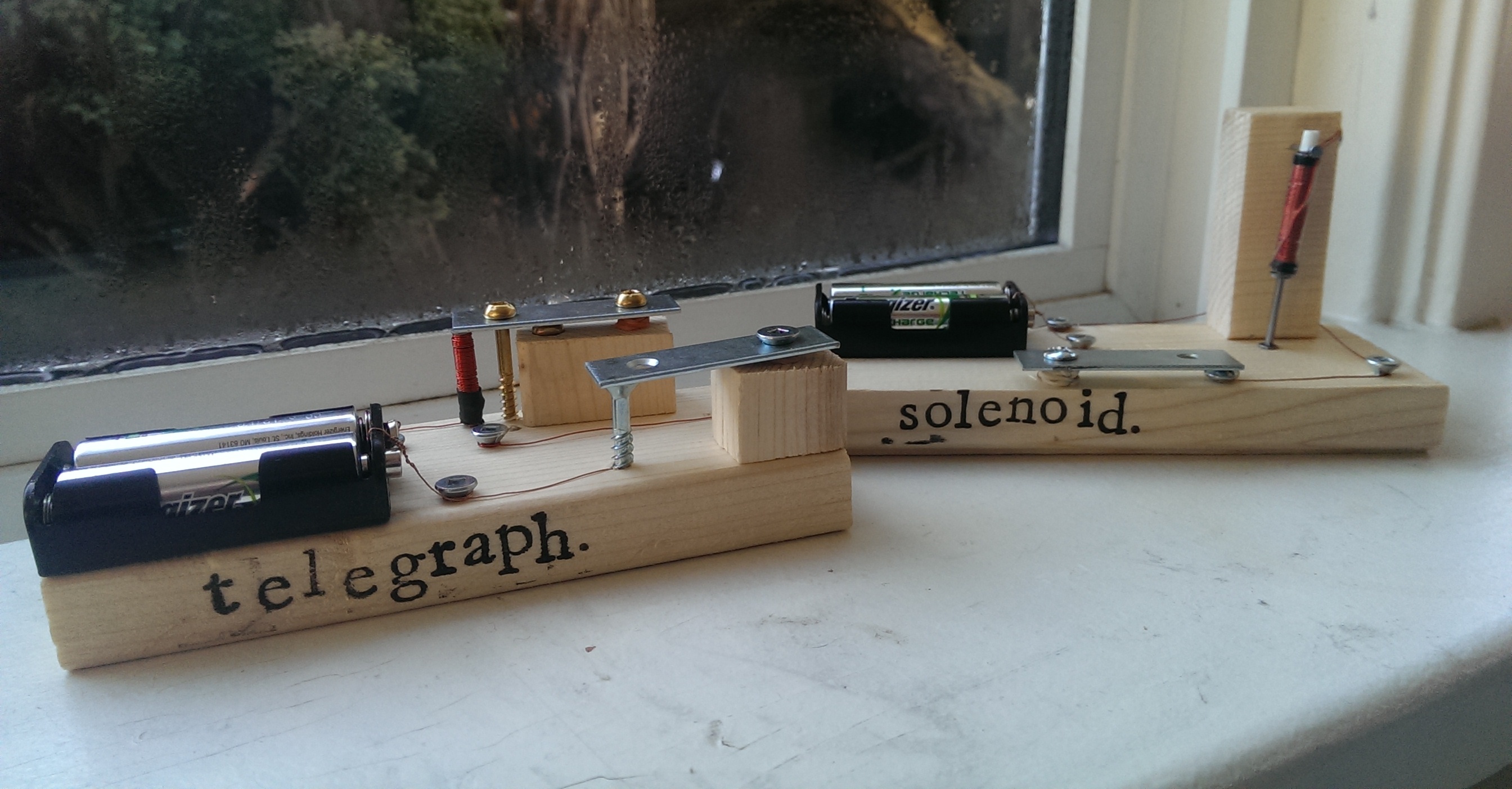Over the past couple of weeks I’ve been researching and constructing simple electromagnet circuits for a mechanism in the Early Wearables Kit, specifically in the remaking of Gustave Trouvé’s teeth-gnashing skull pin. Given the historical moment in which the pin was created, as well as Trouvé’s use of electromagnetic motors in many of his other patents, our current prototypes are based on a modified telegraph sounder. (Thanks, Edward, Bill, and Devon, for the tip.)
Basically, a telegraph consists of an electromagnetic coil connected in a circuit with a low-voltage power source. An armature is positioned in proximity to the coil, and when the circuit is closed, the electromagnet is activated and the armature is attracted to it, causing an audible “click” noise. A metal key or button is used to close the circuit. The benefits of this device are that the mechanism can be made small (appropriate if we hope to approach the roughly two-centimetre diameter of the original piece) and that it makes the click sound when activated by a button, which could be concealed in the wearer’s pocket alongside a battery pack (as we believe was done during the late Victorian period).
One of the constraints of the telegraph mechanism, however, is that the armature of the telegraph needs to be positioned close enough to the magnet to be attracted by the magnetic force—generally within a couple of millimetres. This means that, while the gnashing jaw motion will produce audible feedback, its visual feedback would likely be less perceptible. To get around this problem, I also built a prototype for a solenoid circuit. Similar to a telegraph, a solenoid electromagnetically attracts an armature, only in this case the magnetic coil is wrapped around a tube and the armature is drawn through it. This affords a far greater range of motion for the armature and also maintains the audible clicking sound.
I made a video demonstrating the two pieces:
As for which mechanism more accurately reflects the one Trouvé (allegedly) used in the original pin, in the absence of access to the physical artifact this decision is a matter mostly left to historical and technical conjecture. As Jentery noted in his recent post, this research is in the context of using our limited knowledge of the original artifact as a point of study of the scientific, technological, and cultural conditions in which Trouvé conducted his work. In this case, both the telegraph and solenoid will be developed further as possible additions to the final circulated device and the Early Wearables Kit.
Post by Shaun Macpherson, attached to the KitsForCulture project, with the physcomp and fabrication tags. Featured image and video for this post care of Shaun Macpherson.

